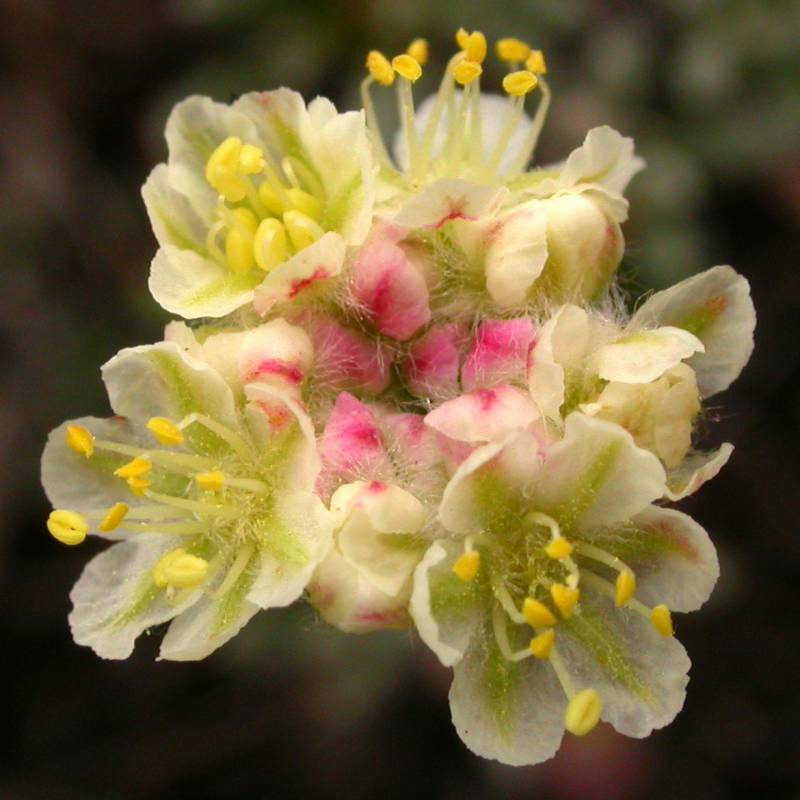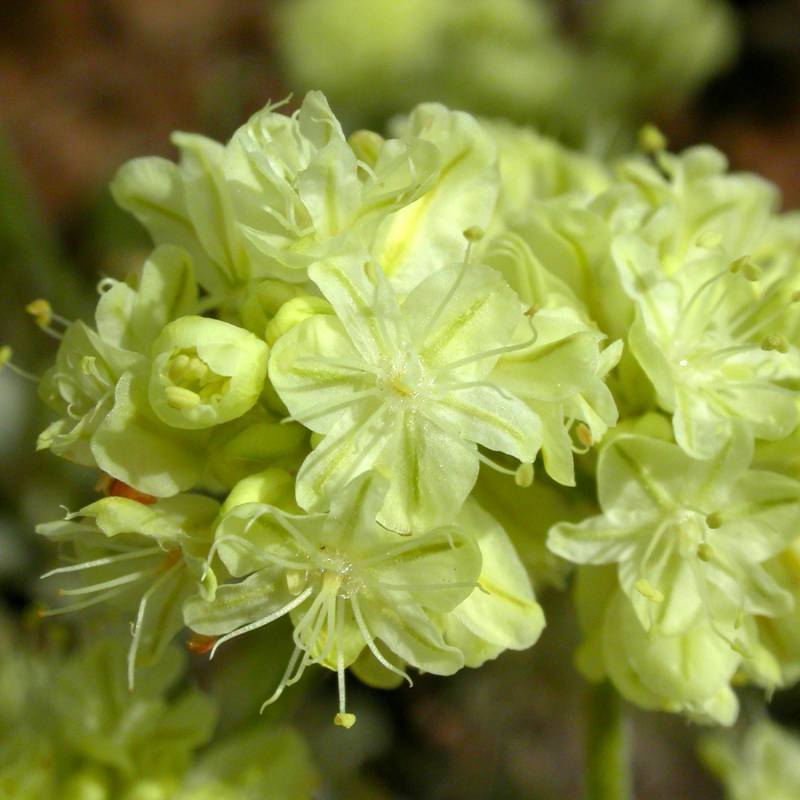|
thyme buckwheat, thyme-leaf wild buckwheat
|
strict buckwheat
|
| Intricately branched, low and spreading to erect shrub 5-15 cm. tall, somewhat gray-woolly to silky throughout. |
Perennial with woody stems up to 1 dm. long, the several flowering stems to 3 dm. tall, usually white-woolly throughout and more or less freely branched. |
Leaves many, linear to linear-spatulate, 3-10 mm. long, usually revolute, somewhat wooly beneath and silky above. |
Mostly basal, the blades elliptic to ovate, 5-25 mm. long, usually white-woolly on the lower surface and less so on the top, on petioles as long to 4 times as along as the blades. |
Flowering stems 3-8 cm. tall, always with a whorl of leaves about mid-length; involucres single and terminal, top-shaped, 3-5 mm. long, the teeth 6-8, erect, triangular, 1 mm. long; perianth with a stipitate base 0.5-1 mm. long, densely hairy, the 6 segments obovate, yellow or white to rose-red, 4-6 mm. long; plants dioecious, the staminate flowers with 9 stamens, the filaments hairs only at the base, the pistillate flowers with stout, spreading styles 0.5-1 mm. long. |
Flowering stems leafless, the inflorescence from open and freely branched with the involucres single at the branch tips to umbellate and the involucres somewhat clustered; with small, linear bracts at the forks of the branches; involucres narrowly cup-shaped, with 5 triangular, erect, short teeth; tepals white or cream to pinkish or yellow, 3-4 mm. long, divided nearly to the non-stipitate base, the segments oblong, the outer twice as broad as the inner. |
Achenes pubescent above |
|
|
|
|
|
| Separate from the similar Eriogonum douglasii by the involucre lobes; E. thymoides has erect lobes, E. douglasii, reflexed to spreading lobes. |
Eriogonum strictum plants with the branched inflorescence may be separated from the similar E. niveum by the bracts at the branch joints, which are small and thread-like in E. strictum and leaf-like in E. niveum. The E. strictum plants with umbellate and somewhat compressed flower clusters may be confused with E. ovalifolium when the tight, head-like flower clusters of the latter are in umbels instead of single. |
| April-June |
May-July |
| Sagebrush deserts, dry ponderosa pine forest openings, and open ridges in lower mountains. |
Sandy or rocky soils, sagebrush desert to ponderosa pine forests. |
Occurring east of the Cascades crest in central Washington; central Washington to Oregon, east to Idaho.
|
Occurring east of the Cascades crest in Washington; Washington to California, east to Montana, Idaho, and Nevada.
|
| Native |
Native |
| Not of concern |
Not of concern |
E. baileyi, E. cernuum, E. codium, E. compositum, E. douglasii, E. elatum, E. flavum, E. heracleoides, E. maculatum, E. marifolium, E. microtheca, E. niveum, E. nudum, E. ovalifolium, E. pyrolifolium, E. sphaerocephalum, E. strictum, E. umbellatum, E. vimineum |
E. baileyi, E. cernuum, E. codium, E. compositum, E. douglasii, E. elatum, E. flavum, E. heracleoides, E. maculatum, E. marifolium, E. microtheca, E. niveum, E. nudum, E. ovalifolium, E. pyrolifolium, E. sphaerocephalum, E. thymoides, E. umbellatum, E. vimineum |
|
|
| |



